The African continent is known for its incredible diversity of wildlife, with a range of predators and prey that have evolved over centuries to survive in the wild. If you're curious about the strength of these animals, their bite force is a good place to start.
Understanding their bite force can give us a glimpse into their hunting techniques, survival strategies, and overall physiology. From the brave lions to the stealth leopards, each animal has its unique way of thriving in the wild.
In this article, we'll delve into the bite force of African animals and explore what makes them such fascinating creatures. We'll give you some insight so that you don't just know the figures, you understand them too.
Strongest Bites Of African Wild Animals
Here is a table to summarize and easily visualize the bite force of the African animals shown below. The bite force of the animals is represented in PSI (pounds per square inch) as the unit of measuring the pressure exerted.
Keep reading to each animal to see how the strong bite helps the animals - whether for feeding, defence or any other purpose.
| # | Animal | Bite Force (PSI) |
|---|---|---|
| 1 | Nile Crocodile | 3700 - 4000 PSI |
| 2 | Hippopotamus | 1825 PSI |
| 3 | Gorilla | 1300 PSI |
| 4 | Chimpanzee | 1300 PSI |
| 5 | Spotted Hyena | 1100 PSI |
| 6 | African Lion | 650 PSI |
| 7 | Cheetah | 475 PSI |
| 8 | African Wild Dog | 317 PSI |
| 9 | Leopard | 300 PSI |
1. Nile Crocodile (PSI: 3,700 - 4,000)
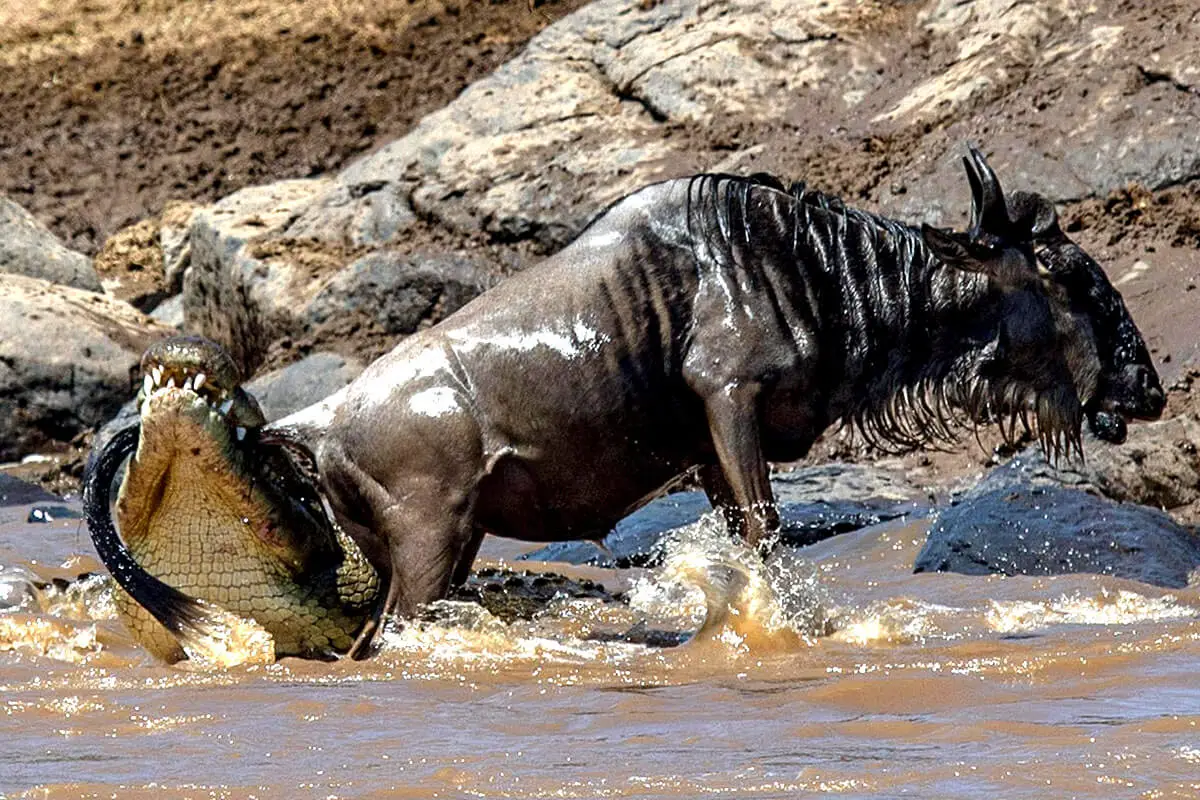
With a PSI (pounds per square inch) of 3,700 - 4,000, the Nile crocodile has the greatest biting power of any African animal. The crocodile's powerful jaws and strong conical teeth can crush the bones of most animals in one bite.
The power of a crocodile's jaws can best be witnessed during the great migration as herds of wildebeest cross the Mara River at high speeds - and a crocodile will jump and latch onto a 250kg wildebeest until it drowns it before dragging it to where it can start eating.
Nile crocodiles can be found in most of subsaharan Africa, especially the big rivers and lakes in protected areas and they are easy to see while on safari.
2. Hippopotamus (PSI: 1,825)
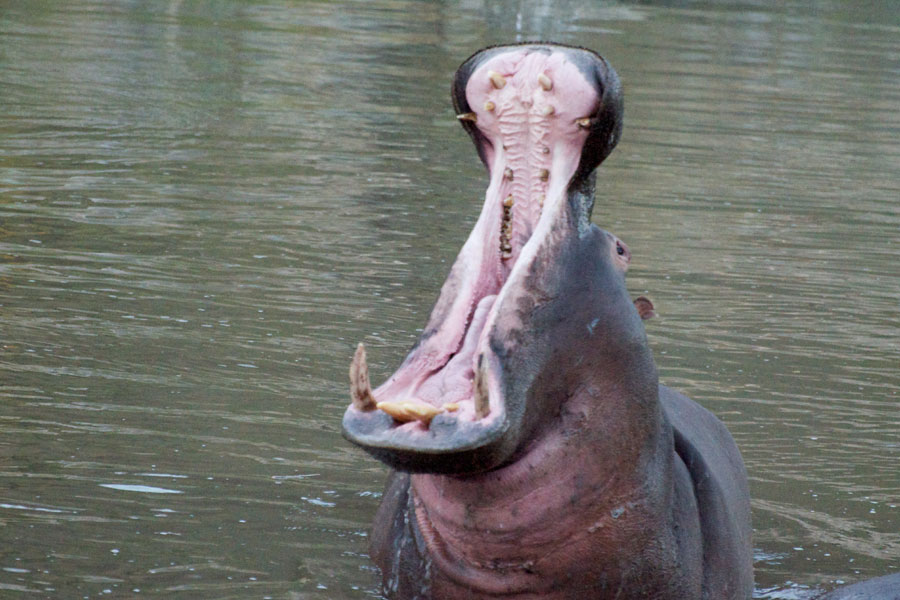
The hippopotamus sports one of the most fierce-looking open mouths of African animals, and that comes with a strong biting force of 1825 PSI. The hippo's mouth can open to an impressive 150o or more - enough to accommodate the torso of a grown lion or a small local fishing canoe.
The sharp protruding incisors will tear through and crush any animal - with lions, crocodiles and hyenas easily dying due to a misguided attack on a hippo.
For the safari goer, you will easily see the hippos open their mouths as they yawn. You will of course be at a safe distance since hippos have a volatile temper that makes them one of Africa's most dangerous animals - to other animals and humans.
Here is a full article that explores how dangerous a hippo really is.
3. Gorilla (PSI: 1300)
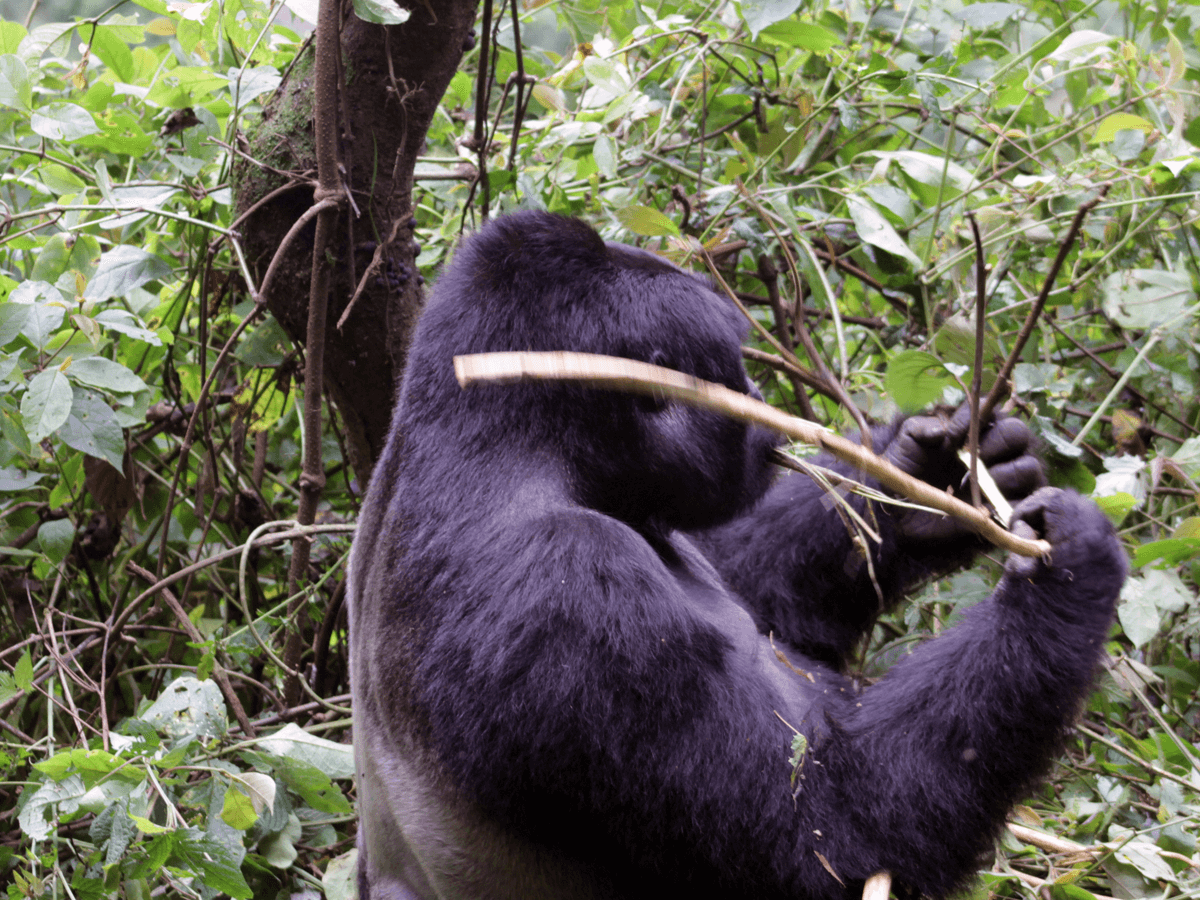
Gorillas are not only the biggest and strongest primates, but they also bite the hardest. An adult gorilla has a bite force of around 1300 PSI - more than 8 times stronger than an average human adult.
Gorillas use their strong jaws and teeth to crush and grind through plant material such as twigs, barks, bamboo shoots and leaves they eat for food. Given the large quantities of food they eat daily, gorillas utilize and practice with their strong jaws.
When fighting for territory or dominance, silverbacks can use their teeth to cause serious injury to their opponents, and the loser usually has serious injuries and cuts.
4. Chimpanzee (PSI: 1300)
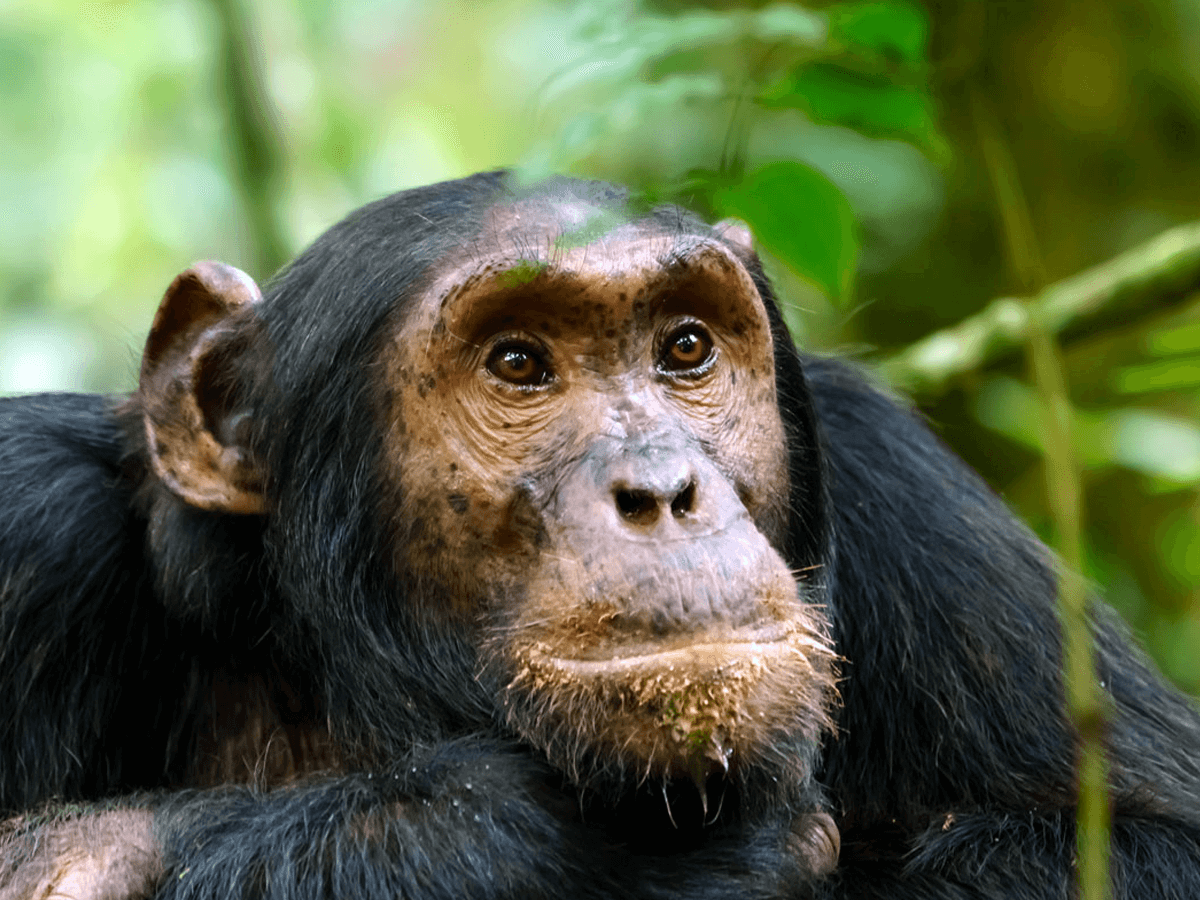
Our closest animal cousins - the chimpanzees have a biting force is roughly 1,300 pounds per square inch (psi). This is around 8 times stronger than the average human's biting force.
Chimpanzees have relatively large and powerful jaw muscles for their omnivorous diet, which includes hard plant items and occasionally meat. In hostile interactions with other chimpanzees or when pursuing monkeys, chimps can use their sharp canines to injure opponents.
Unlike gorillas whose diet is exclusively made up of plant material, chimps tend to eat meat a bit more often by hunting small antelopes and monkeys and eating their flesh raw.
5. Spotted Hyena (PSI: 1,100)
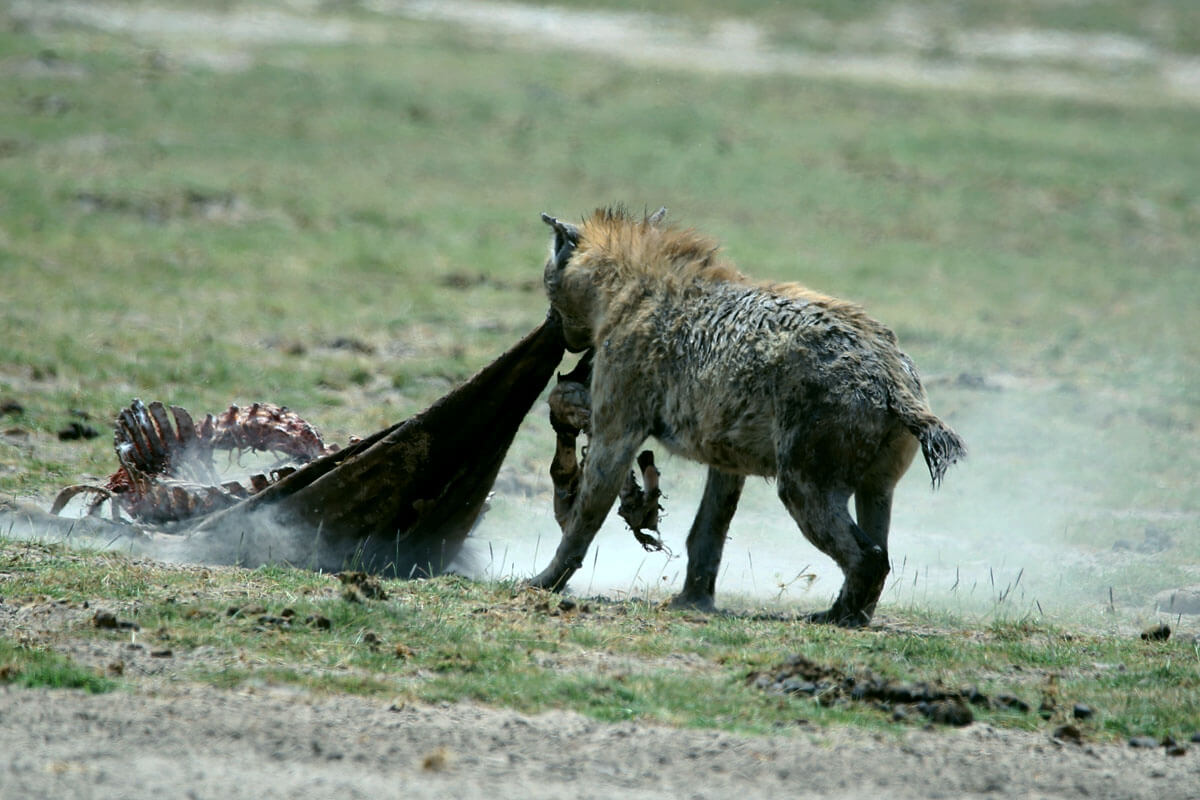
Hyenas are underrated as a major predator in the African wilderness due to the common misconception that they are primarily scavengers. Spotted hyenas have a strong biting force of around 1100 PSI.
This biting strength helps them to easily crush animal bones and thick skins - all of which are part of their diet. Whether it is through scavenging or hunting, hyenas eat all parts of their prey and the strong bite plays a big part in this.
For some context, the hyena can crush the strongest bone in a human being - the femur - in one bite. In the wild, they can do the same while hunting and eating antelopes, zebras, wildebeest and more.
6. African Lion (PSI: 650)

Most people would assume the lion has the strongest bite in Africa, but it is not. The African lion has a bite force of 650 PSI, which is powerful enough to kill its target with a bite to the neck.
Lions are social animals that hunt in groups of the same pride and are known for their impressive bravery, strength, and agility.
Since lions don't have the strongest bite, their bravery and cooperation in hunting are what raise them to the top of the food chain when compared with other animals on this list.
Take a look at our full article that looks at the hunting success rate of African animals to get an idea of how a lion uses its advantages, and how it compares with other animals such as cheetahs, leopards or African wilddogs.
7. Cheetah (PSI: 475)

The cheetah is well known for its speed and beautiful coat of spots. An adult cheetah's bite force is around 475 PSI, which is strong enough to kill its primary prey of small to medium-sized mammals.
Cheetahs utilize their speed and great eyesight to make hunting easier in the wild. The adaptations for their speed, such as a smaller head and lighter body make it hard for a cheetah to equally have a strong bite force.
This is why it is a better hunter than a lion, but not strong enough to defend itself when lions and hyenas come to steal its kill.
Related article: What do cheetahs eat in the wild
8. African Wild Dog (PSI: 317)
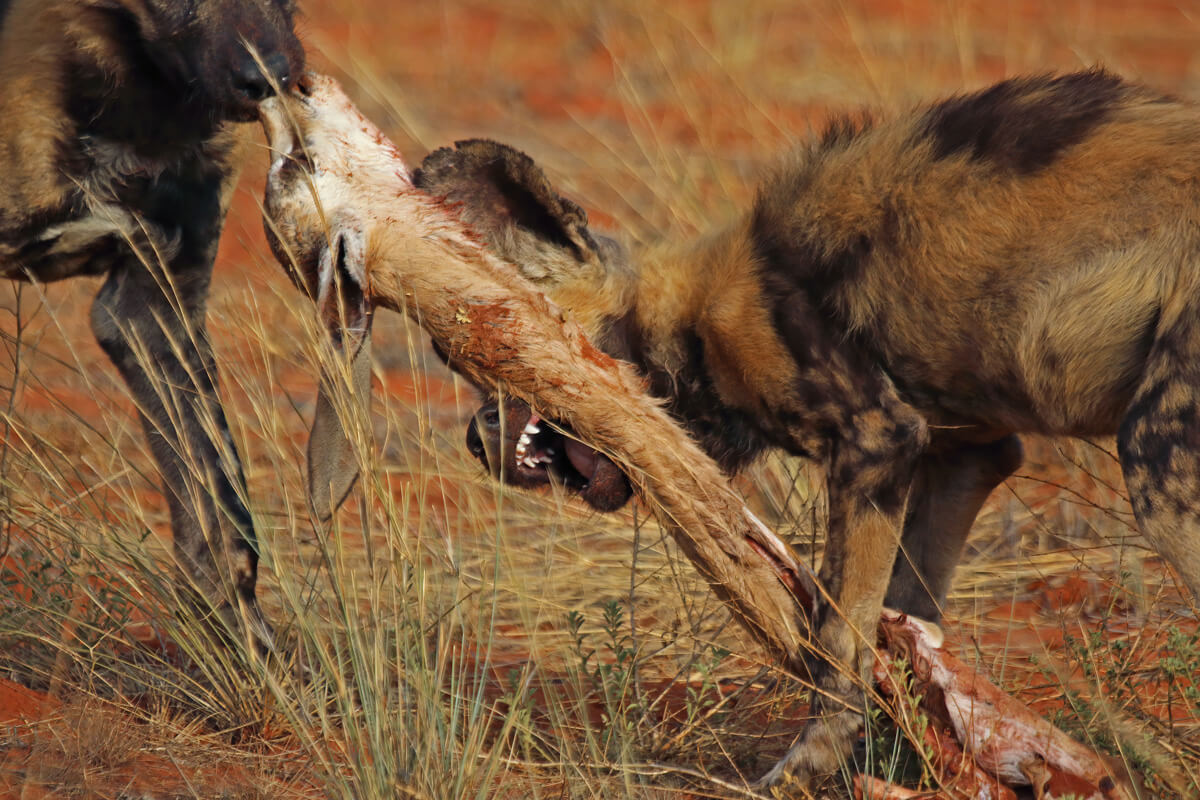
The biting force of the African wild dog is 317 PSI, which may not seem like much when compared to other African predators. Wild dogs, on the other hand, have a distinct hunting technique that entails cooperating in groups to take down huge animals.
African wild dogs have incredible stamina and will generally chase their prey until it is too exhausted to continue or fight back. At that point, their sharp teeth will readily kill the animal, regardless of how big it is.
9. Leopard (PSI: 300)
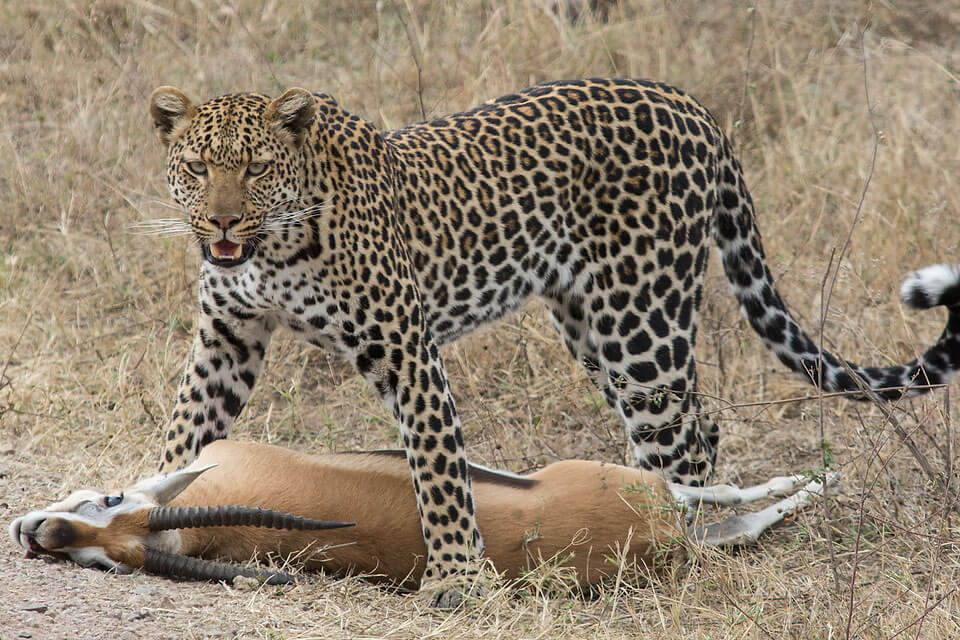
The leopard has a biting force of around 300 PSI which is about half of what a lion has. The leopard's storky build and agility combine well with this biting strength to successfully hunt all kinds of prey - some even larger than themselves.
Leopards hunt alone by quietly stalking their prey and attacking at the right moment when they can pounce on the unsuspecting animal. Since most of its prey are small and medium antelopes, the leopard can hold it down and execute a lethal bite to kill the struggling animal.
Leopards have strong neck muscles that help them carry prey up a tree to hide it from hyenas and lions that would otherwise steal it.
Closing Thoughts
The African wild is the real-life story of survival for the fittest. Some animals need the strong biting power as a way of protection but others need it for protection. While the biting force numbers are truly impressive, that is not all that is required to survive in Africa's wild places.
Factors such as speed, intelligence and social cooperation make a big part of the survival strategy of many of these animals - and others. In the end, each animal has its advantages and limitations - and that is how nature maintains the balance of life.
A prime example of this is comparing us humans with a biteforce of around 160 PSI to a crocodile or a gorilla with 4,000 and 1300 PSI respectively. On biteforce alone, we lose, but our adaptability and advanced social structures make it so that we are 'fitter to survive'.
That being said, it is important to understand that these animals are quite powerful and should you find yourself in their natural habitat, follow the rules for your safety.
Overall, bite force is an impressive and crucial component of an animal's biology, allowing it to hunt and defend itself in its respective habitats.
